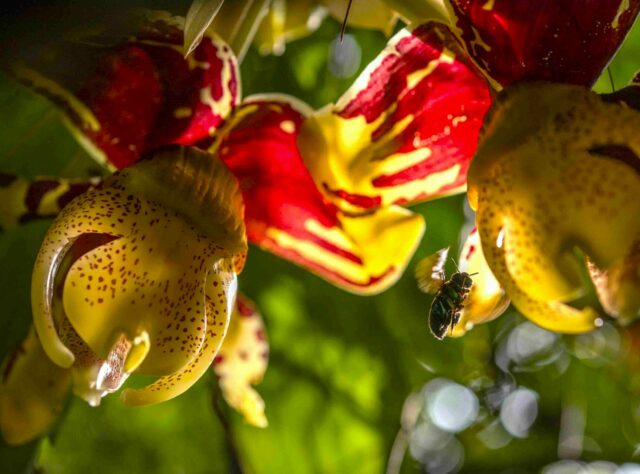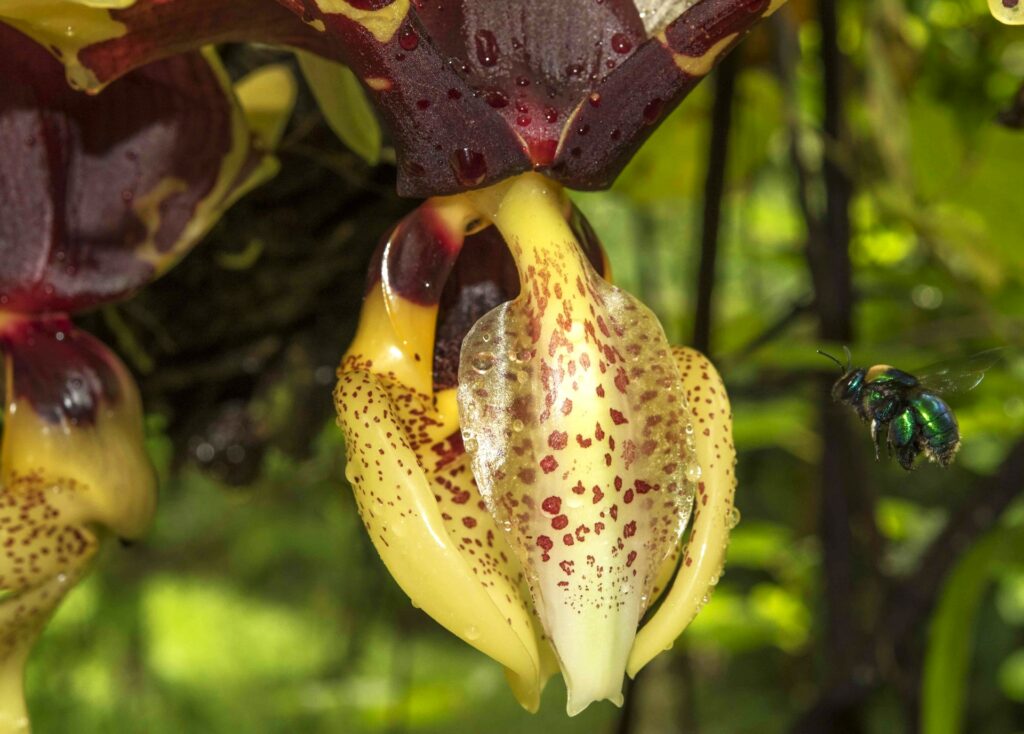
A Stanhopea orchid is visited by an orchid bee in Sierra Gorda Biosphere Reserve. Image credit: Roberto Pedraza Ruiz.
Ecosystems are intricate webs of life, each species interacting with its surroundings in ways that are crucial to its survival. Sometimes, these interactions hang in a delicate balance, whereby a species has become adapted to its environment via many intriguing and often baffling interactions. In this series, we spotlight examples of remarkable adaptations which occur across WLT-supported landscapes.
All species make use of their senses to navigate the world around them. Some species, however, have specialised their sensing more than others. In South and Central America live a very special tribe of brilliantly metallic bees known as orchid bees (Euglossini). For them, their ability to smell is incredibly important.
There are around 230 species of Euglossini and the males of each of them spend their life selecting and gathering scented compounds. Why? To blend their own distinct perfume all in aid of courting a female. In the dense tropical forests of Mexico’s Sierra Gorda, certain male orchid bees have developed a special mutualistic relationship with Stanhopea orchids which they exclusively pollinate. The flowers of this orchid are in bloom for just a few days each year. During this time the orchid bees scrape fragrant oils secreted from the petals. They then store these in pocket-like structures on their hind legs.
Aside from orchids and other flowering plants, these bees spend months making cologne from up to 80 different scents collected from around the forest. This includes faeces, rotting flesh, decaying vegetation, tree resins, and fungi – none of which will likely be making their way into human perfume anytime soon.

A Stanhopea orchid is visited by an orchid bee in Sierra Gorda Biosphere Reserve. Image credit: Roberto Pedraza Ruiz.
When the time comes for courtship, the male orchid bee emits chemical signals into the air. Only the fittest males can gather the most complex of odour mixes which females smell through their antenna. The more complex the mix of fragrances, the more attractive the male becomes.
Orchid bees are attracted to the Stanhopea orchids because of their attractive smell. But the bee doesn’t get rewarded with nectar. In fact, these orchids don’t produce nectar at all but employ deceitful tactics to lure the bee into their flowers. With its attractive flowers, the climbs in and get pollen stuck to its body. All the insect then has to do is visit another flower of the same orchid species to play its role as pollinator.
Orchid bees like those found in the Sierra Gorda Biosphere Reserve are amongst some of the most important pollinator insects of the Neotropics. WLT partner Grupo Ecológico Sierra Gorda works hard to maintain the refugia for these species and many more. Because of this, astonishing evolutionary spectacles can thrive into the future.


